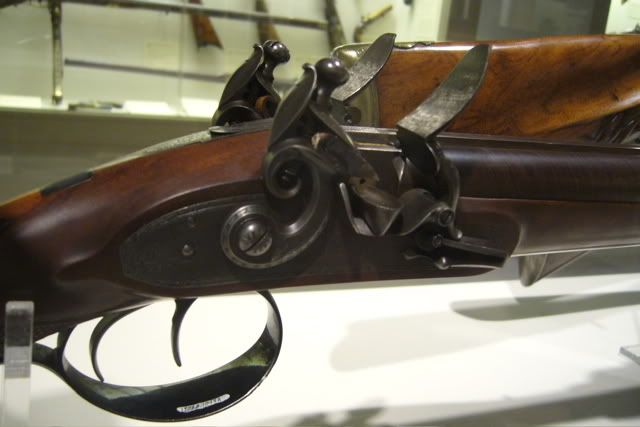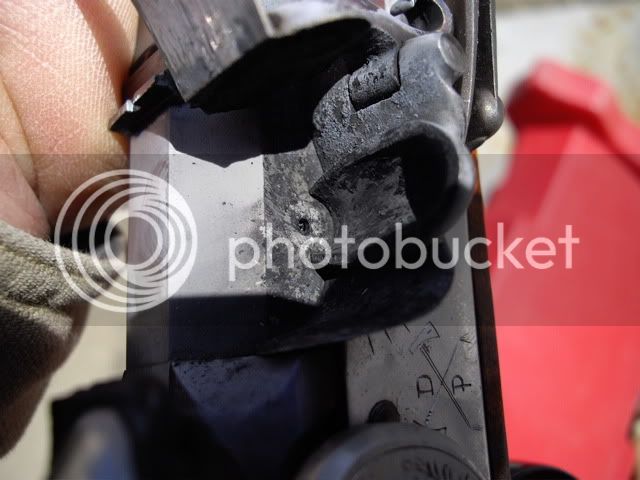I'm in the beginning stages of building (from scratch) a close copy of John Armstrong's outstanding flintlock rifles from the Emmitsburg (Md.) School.
My mentor, the President of our local Black Powder Club who has built three Emmitsburg flintlock rifles, is over-seeing and giving advice as the work progresses. However, I'm doing the actual "work" myself. He has agreed to do the carvings and the scroll work.
I'm putting the best of everything in this .50 caliber flintlock rifle and intend to use it mostly as a "target" rifle at our monthly Club shoots with varying targets at 25 yards and 50 yards. Of course, once a year, I'll use it for my annual deer hunting trip as well... thus the reason for my decision to make it in a .50 caliber rifle.
I've been lurking here, reading all the posts and asking questions now and then, for the past 1½ years and have learned enough to realize I don't know very much... but I also realize there are a good many "true experts" here who know more than I'll ever know, so I'd like to pose a question about coned flash-hole liners that came up the other night when I was discussing them with my mentor.
He urged me to put in an coned flash-hole liner (coned on the inside of the liner) and, somewhere, I read about the liners being coned on the outside OR the inside for specific good reasons, but nothing was said about coning the liners on BOTH sides. As a result, I'm wondering why it apparently isn't an acceptable practice?!?
My question is... "How come flash-hole liners are not coned on BOTH sides?"... i.e., the "advantages" and the "disadvantages".
With the kind of expertise available from you gentlemen in this Forum, I feel confident my question will be frankly & accurately answered together with the reason(s) why it is a good idea or it isn't a good idea to cone the flash-hole liner on BOTH sides... and if not coned on both sides, then on which side is it best to be coned when desiring the quickest ignition of the main powder charge in a flintlock?
Thank you in advance for your help and your answers... :bow:
Strength & Honor...
Ron T.
My mentor, the President of our local Black Powder Club who has built three Emmitsburg flintlock rifles, is over-seeing and giving advice as the work progresses. However, I'm doing the actual "work" myself. He has agreed to do the carvings and the scroll work.
I'm putting the best of everything in this .50 caliber flintlock rifle and intend to use it mostly as a "target" rifle at our monthly Club shoots with varying targets at 25 yards and 50 yards. Of course, once a year, I'll use it for my annual deer hunting trip as well... thus the reason for my decision to make it in a .50 caliber rifle.
I've been lurking here, reading all the posts and asking questions now and then, for the past 1½ years and have learned enough to realize I don't know very much... but I also realize there are a good many "true experts" here who know more than I'll ever know, so I'd like to pose a question about coned flash-hole liners that came up the other night when I was discussing them with my mentor.
He urged me to put in an coned flash-hole liner (coned on the inside of the liner) and, somewhere, I read about the liners being coned on the outside OR the inside for specific good reasons, but nothing was said about coning the liners on BOTH sides. As a result, I'm wondering why it apparently isn't an acceptable practice?!?
My question is... "How come flash-hole liners are not coned on BOTH sides?"... i.e., the "advantages" and the "disadvantages".
With the kind of expertise available from you gentlemen in this Forum, I feel confident my question will be frankly & accurately answered together with the reason(s) why it is a good idea or it isn't a good idea to cone the flash-hole liner on BOTH sides... and if not coned on both sides, then on which side is it best to be coned when desiring the quickest ignition of the main powder charge in a flintlock?
Thank you in advance for your help and your answers... :bow:
Strength & Honor...
Ron T.








